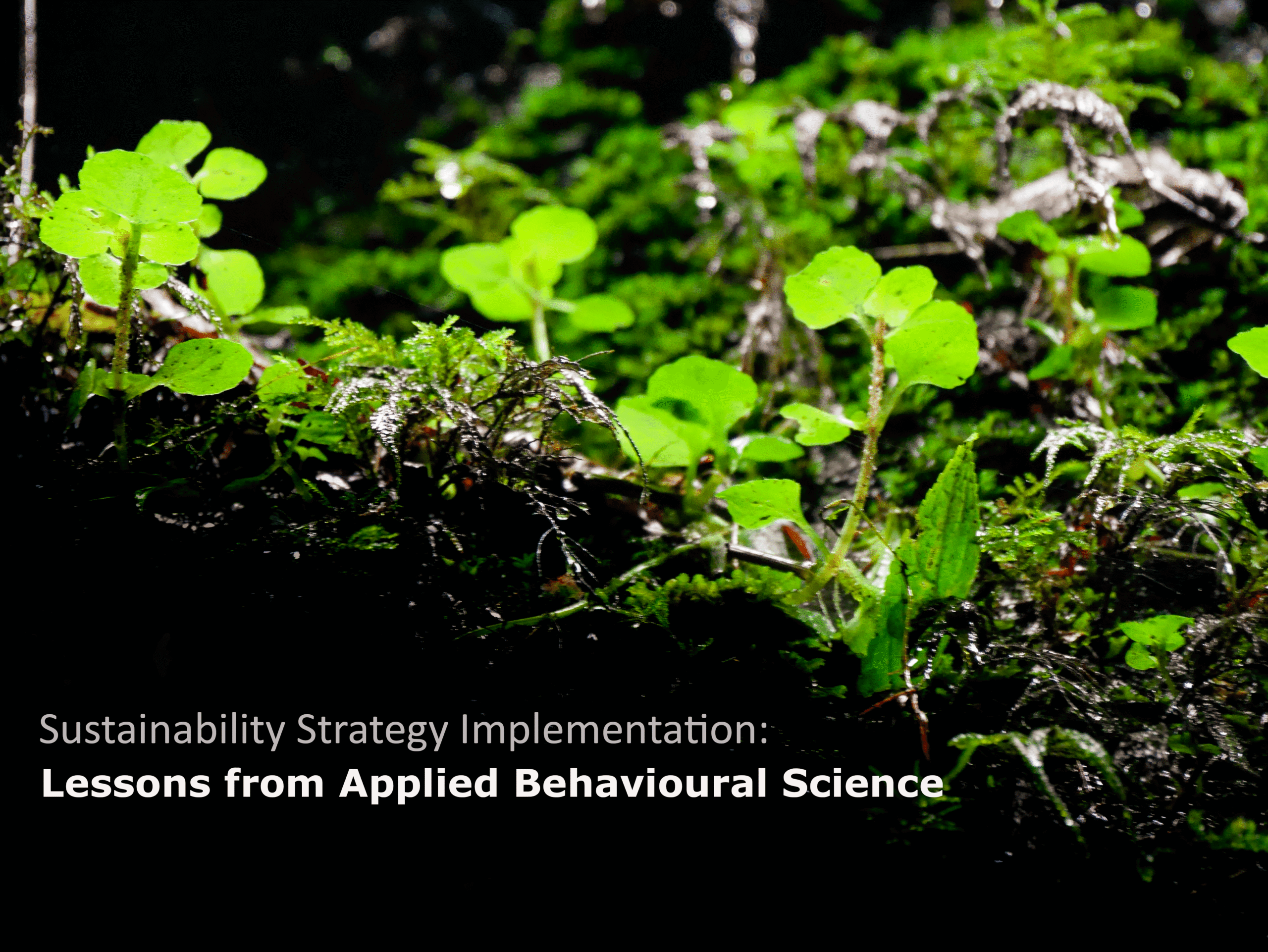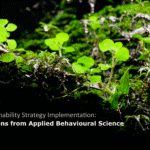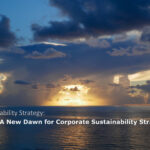The current overt politicisation of sustainability has heightened our awareness that people’s attitudes can both impede and catalyse business change. Have you fully appreciated the importance of the human element to a successful and timely business sustainability transformation?
There is an understandable reluctance to talk about this. If employee attitudes can derail complex sustainability implementation projects, then engaging with staff should demand more of our attention, which takes us more time. But here’s the thing: with ESG out of vogue, there is currently less pressure to publicly demonstrate progress, making it easier for companies to address this out of the spotlight.
Addressing climate change risks and opportunities requires corporate transformation.
An organisation should prioritise addressing the future impact of climate change in its strategic ambition through its contribution to the net-zero transition and by mitigating corporate climate change risk and recognising opportunities. To fully implement these strategies requires corporate-wide action. For instance, decarbonisation will require systemic corporate behaviour change, and to mitigate climate change risk, the relocation of assets or the changing of supply chain partners. Achieving such sizeable project ambitions necessitates breaking them down into manageable, actionable workstreams by strategic prioritisation, and this alone takes time and commitment.
Change management in sustainability means divorcing the business from the politics
The traditional approach to change management ordinarily starts with leaders clarifying the purpose and vision of the change; a first step where open dissent is generally not anticipated. Yet sustainability’s political dimension has given license to sharing opinions, and staff who disagree about the causes of climate change or a business’s ethical responsibilities can be influential blockers to change.
Staff attitudes impeding a change management programme are not uncommon. Often, these manifest as resistance to change or fear of failure; staff may query the relevance of a new process, but rarely that it’s fundamentally wrong, which is an argument levelled at sustainability. This raises the stakes for sustainability projects, making them more likely to fail in execution because of the importance of the human element. Divorcing the business case from the politics is both essential and difficult.
Use tiered communications bespoke to the audience and take lessons from applied behavioural science
The solution is layered communications, starting with broad messaging to all staff about what sustainability means to the organisation, referencing tangible goals such as risk reduction and profit enhancement, instead of ideology. These messages are repeated yet nuanced throughout the organisation by tapping into what matters to each target audience and conveying the different behaviours you’d like staff to demonstrate.
But delivering corporate transformation change relies on more than communication. Drawing upon insights from applied behavioural science, the three necessary components for any behaviour to occur are capability, opportunity and motivation, collectively the COM-B[1] framework. Capability refers to whether staff have the knowledge, skills and abilities to engage in a behaviour. The opportunity is the “can-do” factor referring to time, location and resources. Motivation covers both the conscious and unconscious processes that influence behaviour.
Technology will play a key role in giving the capability and opportunity to deliver a sustainability project, but it will fall flat without staff motivation. Understanding motivations requires emotional intelligence to identify those for whom sustainability’s motivational resonance is sufficient to drive action, and those for whom hard incentives are necessary. It’s an art and potentially a huge time-sink, but getting this right will truly embed sustainability in operations, which is the goal.
In conclusion
Perhaps the good thing about the ESG reset is that it’s forcing us to critically evaluate the execution challenges we face in actioning a corporate sustainability strategy, like achieving the net-zero target or living by the policies we’ve created for ethical business. Internal resistance on philosophical grounds to the required behaviour change is a genuine issue. Deploying models from applied behavioural science, like the COM-B, gives a route forward but also reminds us that real change takes time and effort. Companies willing to confront this now will be the winners of the future.
[1] Michie, S., Van Stralen, M. M., & West, R. (2011). The behaviour change wheel: A new method for characterising and designing behaviour change interventions. Implementation Science, 6(1).







Leave a Reply